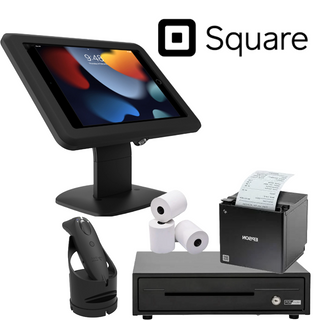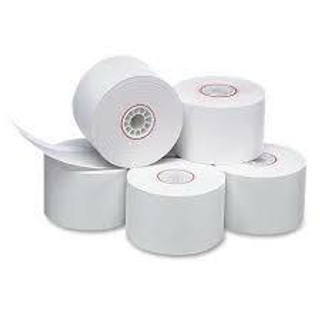Thermal Transfer Labels in Australia:
Now adays clear and durable labeling is crucial across various industries. From tracking inventory in warehouses to displaying product information on retail shelves, labels play a vital role in organization, communication, and brand representation. When it comes to demanding applications and long-lasting performance, thermal transfer labels emerge as the superior choice.
This comprehensive guide delves into the world of thermal transfer labels in Australia, empowering you to make informed decisions for your specific labeling needs. Here, you'll discover:
- The Advantages of Thermal Transfer Labels: Explore the key benefits that set them apart from other labeling options.
- Understanding the Technology: Gain insights into the thermal transfer printing process and how it produces superior results.
- A Multitude of Materials: Discover the diverse range of materials available and their suitability for various applications.
- Choosing the Right Size & Format: Learn about different label sizes and formats to find the perfect fit for your products or packaging.
- Beyond Basic Labels: Explore specialty labels like freezer grade, weatherproof, and heat resistant options.
- Finding the Perfect Match: Identify factors to consider when selecting thermal transfer labels for your Australian business.
- Top Australian Suppliers & Resources: Discover reputable suppliers and valuable resources to assist you in your search.
The Power of Thermal Transfer Labels:
When compared to Direct thermal labels, Thermal transfer labels offer a multitude of advantages:
- Exceptional Print Quality: Thermal transfer printing utilizes a heated ribbon to transfer ink onto the label, resulting in crisp, sharp text, barcodes, and logos. This superior print quality ensures clear and professional-looking labels, even for intricate details.
- Enhanced Durability: Thermal transfer labels are renowned for their long-lasting performance. They resist fading, smudging, and abrasion, making them ideal for applications exposed to harsh environments, frequent handling, or chemicals.
- Wider Material Selection: Thermal transfer labels come in a variety of materials tailored to withstand specific conditions. This allows you to choose labels best suited for your needs, whether it's freezer temperatures, outdoor use, or exposure to UV rays.
- Increased Resistance: Many thermal transfer labels offer superior resistance against moisture, chemicals, and oils, ensuring the information remains legible even under challenging circumstances.
How Thermal Transfer Technology Works?
The magic behind thermal transfer labels lies in the printing process. Unlike direct thermal labels that react directly to heat, thermal transfer labels utilize a separate ribbon. Here's a breakdown of the steps:
- Design & Printing: Create your desired label design using your label printer software.
- Heat Application: The print head of your thermal transfer printer presses a heated ribbon against the label material.
- Ink Transfer: The heat from the print head melts the ink from the ribbon, causing it to adhere to the label surface.
- Durable Bond: As the ribbon cools, the ink solidifies, forming a strong and permanent bond with the label material.
Choosing the Right Fit
The diverse range of thermal transfer label materials caters to a wide spectrum of applications. Here's a breakdown of some popular options:
- Paper Labels: A cost-effective choice for indoor applications where durability isn't a primary concern.
- Polypropylene (PP) Labels: Offer a balance of affordability and durability, suitable for general-purpose labeling, product identification, and shipping.
- Polyester (PET) Labels: Renowned for their exceptional strength and resistance to chemicals, moisture, and abrasion. Ideal for harsh environments, outdoor use, and durable product labeling.
- Vinyl Labels: Highly versatile and provide excellent resistance to moisture, chemicals, and tearing. Perfect for applications requiring flexibility and durability.
- High-Temperature Labels: Engineered to withstand extreme temperatures, making them suitable for industrial applications and products exposed to heat.
- Cryogenic Labels: Designed to maintain adhesion and legibility in extremely cold environments, such as freezers and laboratories.
Choosing the Perfect Size & Format:
Thermal transfer labels come in a vast array of sizes and formats to accommodate different application needs. Here are some key factors to consider:
- Product Dimensions: Ensure the label size is large enough to comfortably fit all necessary information without appearing cluttered.
- Available Label Space: Consider the designated area on your product or packaging where the label will be applied.
- Label Shape: Standard rectangular labels are common, but specialty shapes might be more visually appealing or practical for specific products.
- Number of Labels per Roll: Choose a roll size that aligns with your printing volume and storage space limitations.
Specialty Labels:
While standard thermal transfer labels offer excellent performance, specific applications might require additional features. Here's a look at some specialty label options:
-
Freezer Grade Labels: These labels are specifically designed to withstand extremely cold temperatures (often down to -40°C) and maintain their adhesion and legibility. Ideal for products stored in freezers, food processing facilities, and cold chain logistics.
-
Weatherproof Labels: Built to endure harsh outdoor environments, weatherproof labels resist fading, tearing, and smudging caused by sunlight, rain, snow, and extreme temperatures. Perfect for outdoor signage, product labeling for outdoor use, and applications exposed to the elements.
-
Heat Resistant Labels: These labels can withstand high temperatures (often exceeding 200°C) without melting, delaminating, or losing their print quality. Ideal for labeling heat-generating equipment, automotive parts, and products exposed to high heat during processing or use.
-
Chemical Resistant Labels: Certain labels offer superior resistance to specific chemicals, solvents, and oils. These are crucial for applications in laboratories, manufacturing facilities handling chemicals, and industries requiring labeling on products containing harsh substances.
-
Tamper Evident Labels: These labels leave a visible mark upon removal, deterring tampering and providing an indication if a product has been compromised. Ideal for applications requiring security, such as pharmaceuticals, valuable goods, and tamper-proof packaging.
Choosing Thermal Transfer Labels in Australia
Selecting the ideal thermal transfer labels for your Australian business requires careful consideration of several factors:
- Application & Environment: Analyze the intended use of your labels and the environment they'll be exposed to. Consider factors like temperature, moisture, chemicals, and potential wear and tear.
- Material & Durability: Choose the material best suited for your application based on its durability and resistance properties.
- Size & Format: Select the appropriate size and format that effectively fits your product or packaging and accommodates all necessary information.
- Print Quality Requirements: If your labels require intricate details or high-resolution barcodes, prioritize labels specifically designed for such applications.
- Budget: Thermal transfer labels with specialized features might carry a higher price tag than standard options. Balance cost with your specific needs.
- Volume & Frequency: Consider your printing volume and how often you'll need labels to determine the most suitable roll size and purchase frequency.
Thermal transfer labels offer a powerful solution for Australian businesses seeking exceptional print quality, long-lasting durability, and versatility. By understanding the advantages, technology, material options, and factors to consider when choosing labels, you can select the perfect fit for your specific needs. Leverage the resources provided to connect with reputable suppliers in Australia and elevate your labeling game to a whole new level.
POSMARTT is your one-stop shop for all your thermal transfer label needs in Australia. With our extensive selection, superior quality, and commitment to customer satisfaction, we're confident you'll find the perfect thermal transfer labels to elevate your projects.
Browse our online store today and experience the POSMARTT difference!
We offer a diverse range of sizes and materials to suit your specific application, from everyday use to industrial settings. Whether you need small format labels for product identification (40x28mm label roll) or larger options for shipping purposes (100x150mm label roll), we've got you covered.Why Choose POSMARTT Thermal Transfer Labels?
- Superior Print Quality: Achieve crisp, clear text, barcodes, and graphics that resist fading and smudging.
- Durable Materials: Our labels come in a variety of materials, including polyester and freezer grade options, ensuring they withstand harsh environments and wear and tear.
- Weatherproof & Heat Resistant: Need labels that can handle the elements? Our weatherproof and heat resistance labels are ideal for outdoor applications or products exposed to high temperatures.
- Next-Day Shipping: Get your labels fast! Enjoy the convenience of next-day shipping on most orders (conditions apply).
- Best Price & Price Match Guarantee: We're committed to offering competitive prices. If you find a better price elsewhere, we'll match it!
Shop a Wide Variety of Thermal Transfer Labels:
- Small Label Rolls: Perfect for product identification, small packaging, and intricate labeling needs. Explore sizes like 40x28mm or 50x28mm label rolls.
- Custom Label Rolls: Don't see the size you need? POSMARTT offers custom label roll options to meet your precise specifications.
- Ribbons & Wax Resin Ribbons: Find the perfect complement for your labels with our selection of high-quality ribbons, including wax resin ribbons for optimal printing performance.
Brainstorming
Q. What are the benefits of thermal transfer labels compared to direct thermal labels?
A. Thermal transfer labels offer superior print quality, greater durability, a wider range of material options, and increased resistance to elements like moisture, chemicals, and oils compared to direct thermal labels.
Q. How does thermal transfer printing work?
A. Thermal transfer printing uses a heated ribbon to melt ink onto the label material, creating a strong and permanent bond.
Q. What are some popular materials used for thermal transfer labels?
A. Common materials include paper (affordable, indoor use), polypropylene (general purpose), polyester (strong, harsh environments), vinyl (versatile, durable), high-temperature labels, and cryogenic labels (freezers).
Q. What factors should I consider when choosing the size and format of my thermal transfer labels?
A. Consider product dimensions, available label space, desired shape (standard rectangle vs. specialty), and the number of labels needed per roll.
Q. When would I need specialty thermal transfer labels?
A. Specialty options like freezer grade, weatherproof, heat resistant, chemical resistant, and tamper evident labels offer additional protection for specific environments or security needs.
Q. What are some things to keep in mind when selecting thermal transfer labels in Australia?
A. Consider the application and environment, material and durability requirements, size and format, print quality needs, budget, and printing volume/frequency.
Q. Are thermal transfer labels more expensive than direct thermal labels?
A. Generally, yes. However, the increased durability and wider range of material options can make them a cost-effective choice in the long run for demanding applications.
Q. How can I ensure my thermal transfer labels are compatible with my printer?
A. Always check the specifications of your thermal transfer printer to ensure the labels and ribbons you choose are compatible with its size and printing capabilities.





























